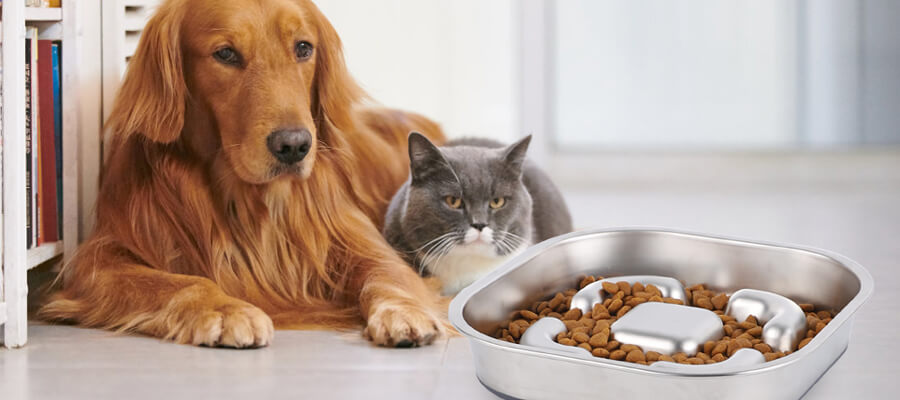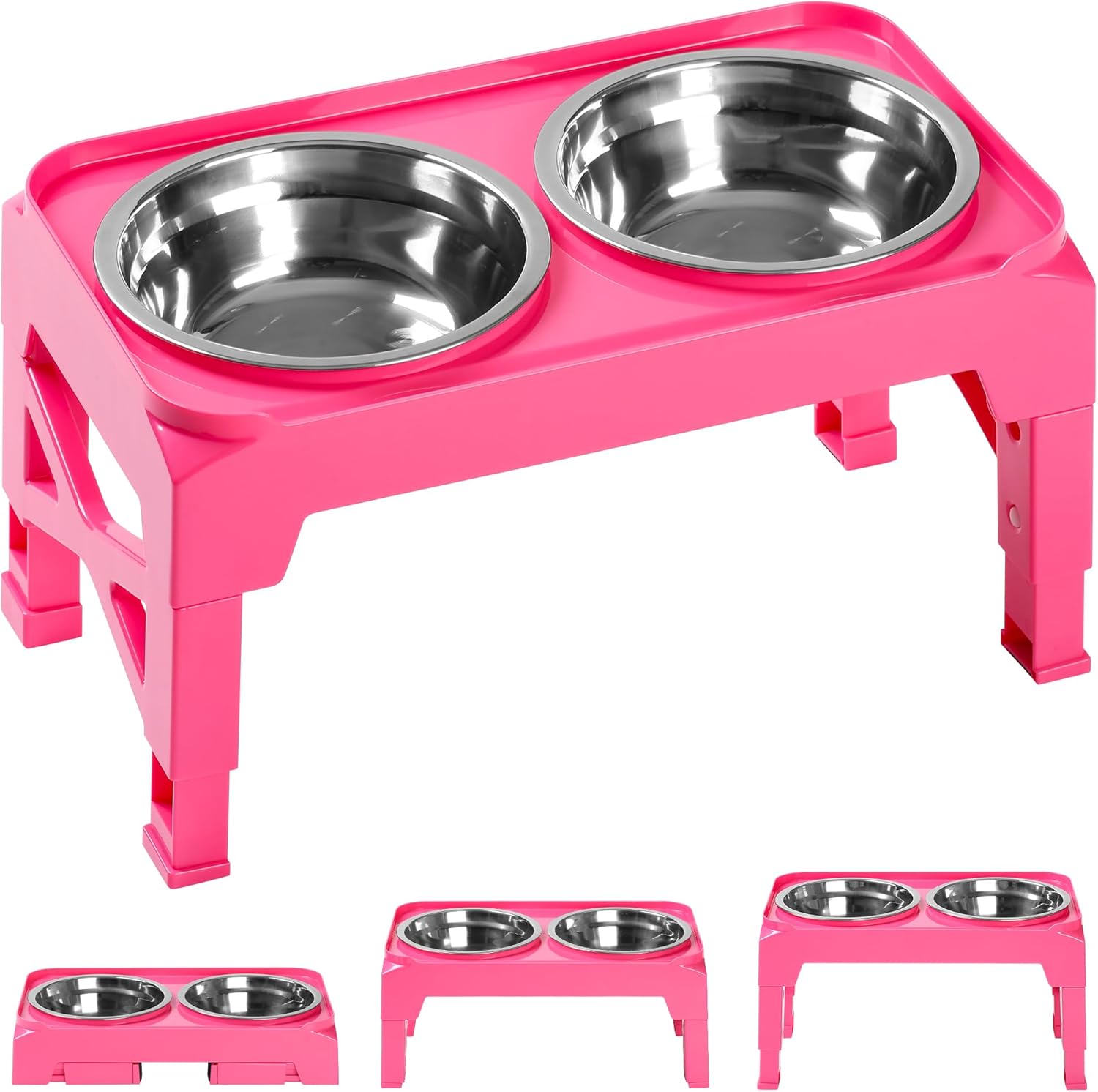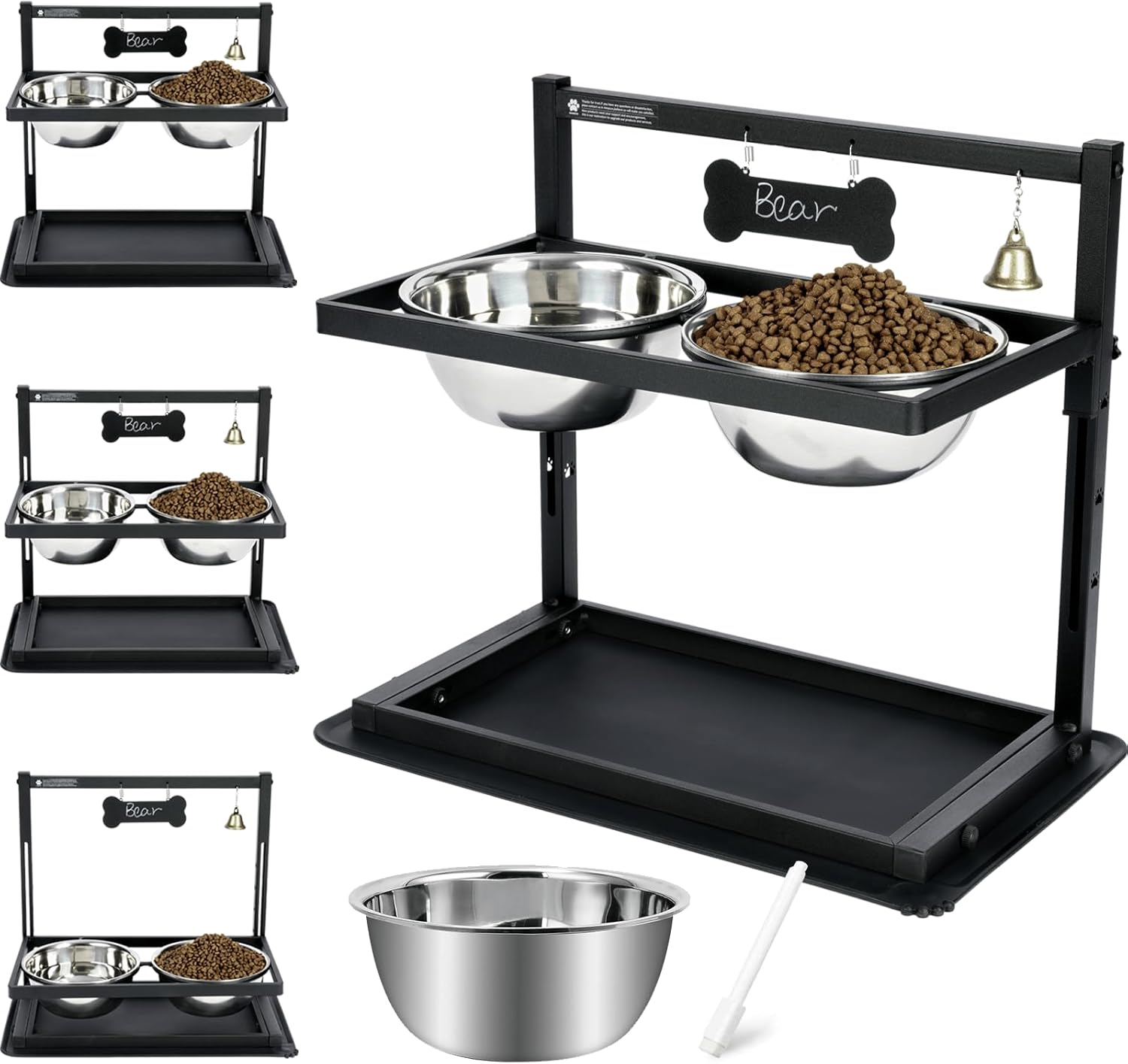
Dog Food Dispensers and Bowls: What’s Best for Your Pet
Dog Food Dispensers and Bowls: What’s Best for Your Pet’s Feeding Needs
Introduction
As a dog owner, ensuring your pet has the right tools for feeding is essential for their health, comfort, and convenience. From automatic food dispensers to traditional food bowls, the type of feeding equipment you choose can significantly affect your dog's eating habits and overall well-being. In this guide, we'll explore the different types of dog food dispensers and bowls, their features, and help you decide which one is best for your pet.
Why Choosing the Right Feeding Equipment Is Important
The right dog food dispenser or bowl can enhance your dog's eating experience, contributing to better digestion, portion control, and overall health. Here’s why feeding tools matter:
- Portion Control: Helps prevent overfeeding or underfeeding by controlling the amount of food dispensed.
- Digestive Health: Certain bowls are designed to slow down your dog’s eating, helping to reduce the risk of bloating and indigestion.
- Convenience: For busy owners, automatic dispensers and smart feeders make feeding effortless, while traditional bowls are a simple, reliable option.
- Hygiene: Choosing the right material and design can help maintain clean eating habits and reduce the risk of food-related bacteria.
Types of Dog Food Dispensers
Automatic food dispensers and smart feeders are ideal for dog owners with busy schedules or those who want more control over their pet's diet. Here’s a breakdown of the most popular types:
1. Automatic Dog Food Dispensers
Best for: Busy schedules, portion control, and maintaining a consistent feeding routine.
- How It Works: Automatic dispensers are programmed to release a specific amount of food at set times. Some models have additional features like voice recorders, app controls, and slow-feed settings.
-
Features:
- Programmable Settings: Allows you to schedule meals at specific times of the day, ensuring your pet gets fed on time.
- Portion Control: Helps manage portion sizes to prevent overeating, which can be particularly useful for dogs prone to obesity.
- Smart Feeder Integration: Some models can be controlled via smartphone apps, offering remote access for feeding even when you're not at home.
-
Best For:
- Dogs on strict feeding schedules or with dietary restrictions.
- Multiple pet households.
- Busy owners who want the convenience of remote control.
Examples:
- WOPET Automatic Pet Feeder: Holds up to 20 cups of dry food and has programmable meal settings with a portion control system.
- PetSafe Smart Feed Automatic Dog Feeder: Offers Wi-Fi connectivity, app control, and features like slow feeding to prevent gulping.
2. Gravity Feeders
Best for: Dogs that prefer to graze or need constant access to food throughout the day.
- How It Works: Gravity feeders use the weight of the food to automatically refill the bowl as your dog eats, providing a constant supply of food.
-
Features:
- Constant Food Supply: The food continuously flows into the bowl, ensuring your dog has access to food at all times.
- Simple Design: No batteries or complicated setup is required.
- Affordable: Often less expensive than automatic dispensers.
-
Best For:
- Dogs that eat multiple small meals throughout the day.
- Households where feeding schedules are more flexible.
Examples:
- Lixit Gravity Feeder: A simple, reliable option for owners who want a low-maintenance food dispenser.
Types of Dog Bowls
While dispensers can handle your pet’s feeding schedule, bowls still remain essential for daily use. Here’s a breakdown of different types of dog bowls based on their materials, design, and function.
1. Stainless Steel Bowls
Best for: Durability, hygiene, and ease of cleaning.
- Why It’s Great: Stainless steel bowls are a top choice for dog owners who prioritize hygiene. They are resistant to rust, easy to clean, and are much harder to chew through compared to plastic or ceramic bowls.
-
Features:
- Durable: Stainless steel is nearly indestructible and can withstand rough handling.
- Hygienic: Does not absorb odors or bacteria like plastic can.
- Non-slip Designs: Many stainless steel bowls come with rubber bottoms or anti-slip rings to prevent the bowl from sliding around.
Examples:
- PetFusion Stainless Steel Dog Bowl: Designed with a non-slip base and a wide mouth for easy access to food and water.
2. Non-Slip Bowls
Best for: Preventing messes caused by dogs who push their bowl around while eating.
- Why It’s Great: Non-slip bowls are designed to stay in place, making them ideal for dogs that are overly enthusiastic or messy eaters.
-
Features:
- Rubber or Silicone Base: These materials keep the bowl in place during feeding.
- Easy to Clean: Many non-slip bowls are made of stainless steel or other easy-to-clean materials.
Examples:
- Neater Feeder Deluxe: This system is not only non-slip but also includes a built-in spill tray, making it an excellent option for dogs who tend to make a mess at mealtime.
3. Slow Feed Bowls
Best for: Dogs that eat too quickly, leading to indigestion or bloating.
- Why It’s Great: Slow-feed bowls are designed with ridges or mazes inside the bowl that force your dog to slow down their eating, which helps with digestion and reduces the risk of bloating.
-
Features:
- Maze or Puzzle Design: Helps slow down eating by making your dog work for their food.
- Health Benefits: Reduces the risk of bloating, indigestion, and vomiting after meals.
Examples:
- Outward Hound Fun Feeder: A popular choice for slow-feed bowls, with various designs that make your dog work for each meal.
4. Elevated Bowls
Best for: Older dogs or dogs with joint issues.
- Why It’s Great: Elevated bowls are set at a higher level to reduce the strain on your dog’s neck, back, and joints, particularly beneficial for older dogs or larger breeds.
-
Features:
- Ergonomic Design: Reduces the need for bending down, which is great for older dogs or those with arthritis.
- Prevents Spills: Many elevated bowls come with a stable base to prevent spills and messes.
Examples:
- KOOLTAIL Elevated Dog Bowls: Designed with adjustable height options to fit dogs of different sizes and ages.
How to Choose the Right Dog Food Dispenser or Bowl
When choosing the best feeding equipment for your dog, consider the following factors:
-
Your Dog’s Eating Habits:
- Fast Eater: Choose a slow-feed bowl to prevent rapid eating and reduce the risk of digestive issues.
- Grazing Eater: Consider a gravity feeder that lets your dog eat small amounts throughout the day.
-
Your Dog’s Size and Breed:
- Large breeds may benefit from an elevated bowl or a large-capacity food dispenser, while small dogs will do well with smaller portions and more accessible bowls.
-
Portion Control Needs:
- If you need to control how much your dog eats, automatic dispensers with portion control or measured bowls are ideal.
-
Durability and Maintenance:
- Stainless steel is a durable, easy-to-clean option, while gravity feeders and traditional bowls are simpler but less durable.
-
Your Lifestyle:
- If you travel or work long hours, an automatic food dispenser or smart feeder can help maintain a consistent feeding routine, while manual feeders work well for those who are home more often.
Conclusion: Choosing the Best Dog Food Dispensers and Bowls
Ultimately, the right choice for your dog depends on their needs and your lifestyle. Automatic feeders and gravity dispensers offer convenience and portion control, making feeding simpler for busy owners. On the other hand, traditional bowls, whether they are stainless steel, slow-feed, or elevated, provide a more straightforward feeding solution with various benefits for digestion, joint health, and convenience.
No matter which option you choose, the key is to ensure your dog’s feeding experience is comfortable, healthy, and aligned with their specific needs.
Affiliate Products
We may earn a small commission when you shop through our links — it helps us keep sharing love and care for every dog out there, at no extra cost to you.
Up to 75% Discount

Dog Collar with Health Monitoring
BUY NOW »
Up to 55% Discount

Luxury Faux Furhuge Napping Bed
BUY NOW »




